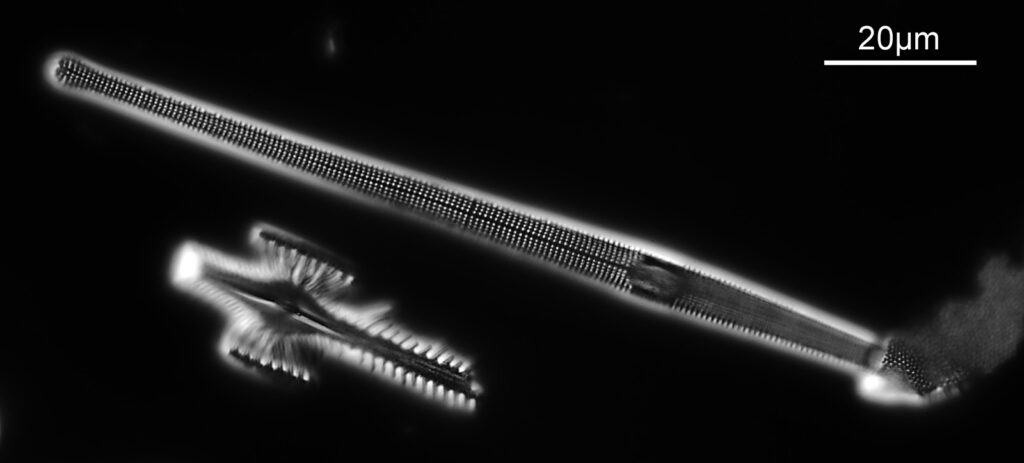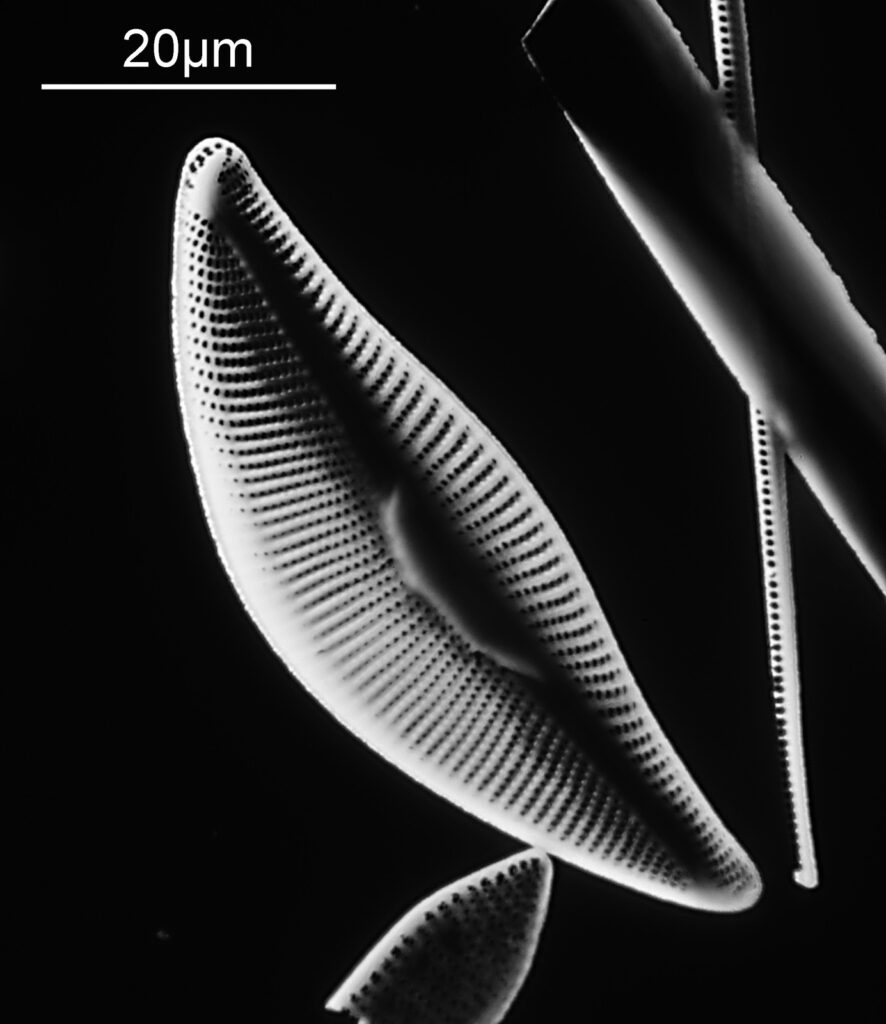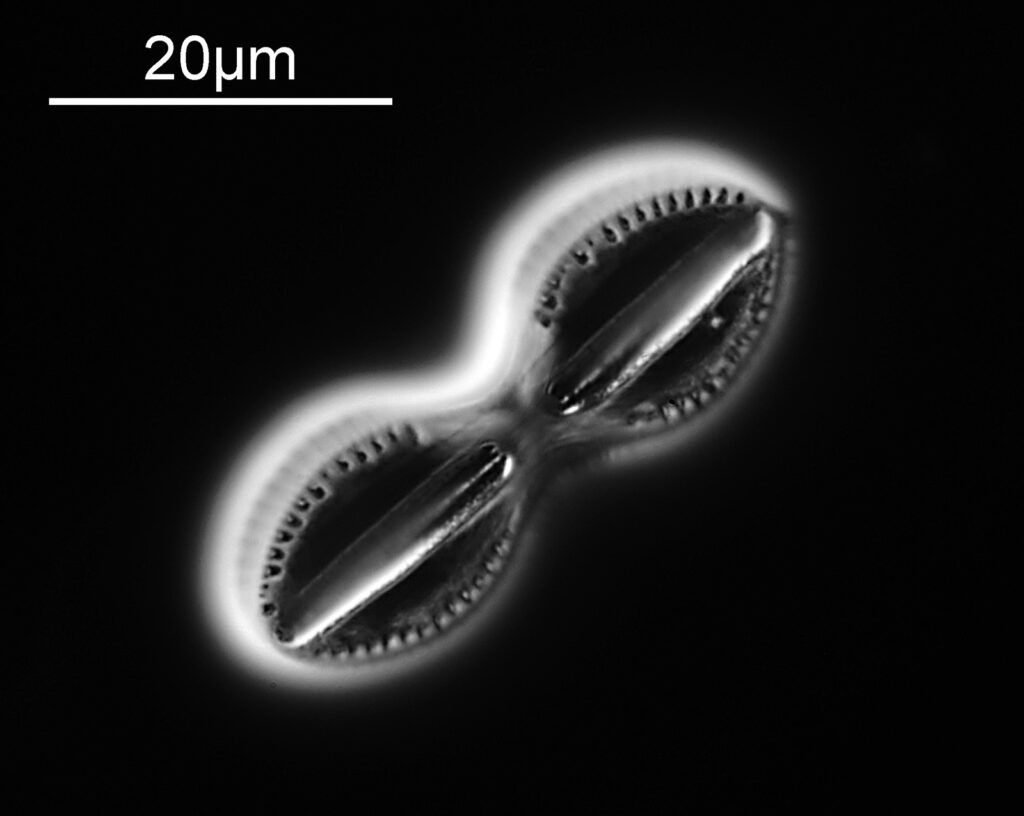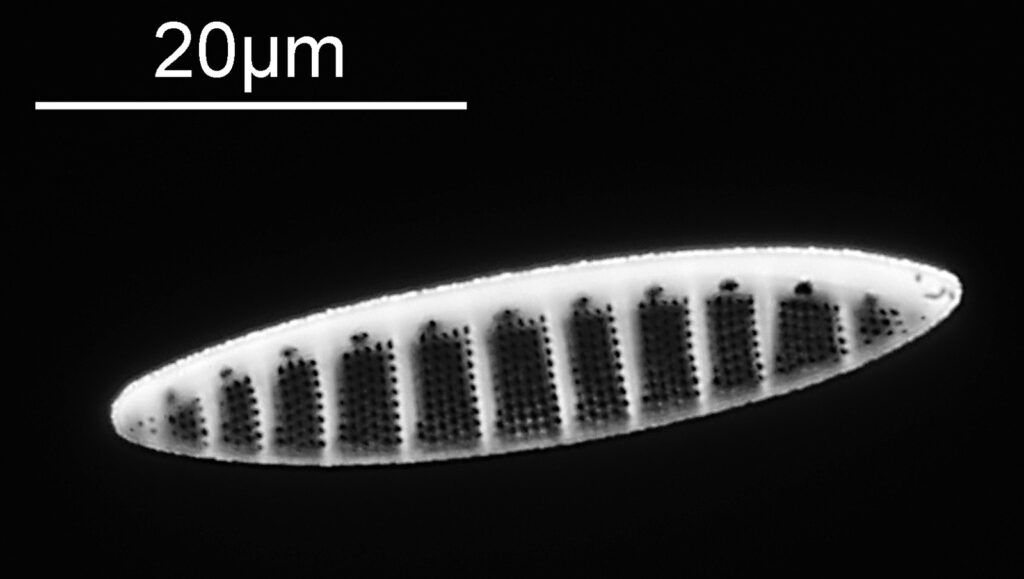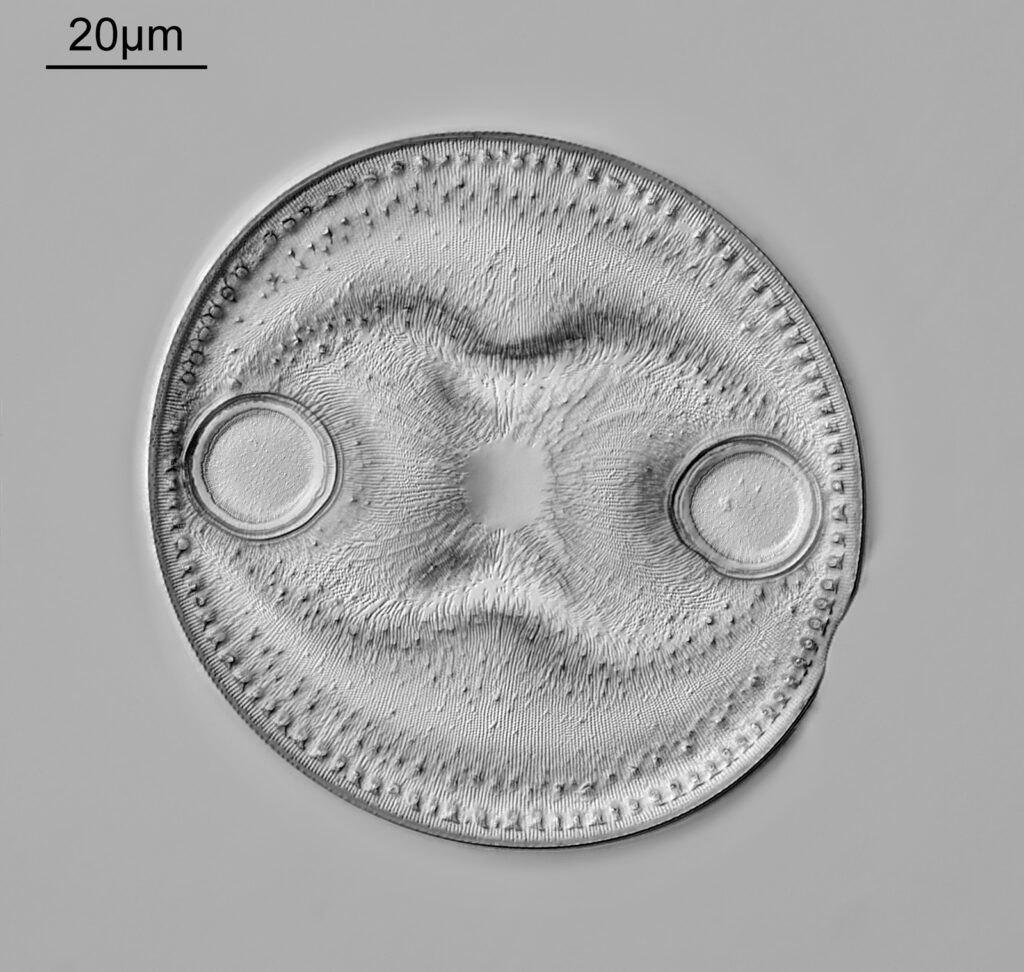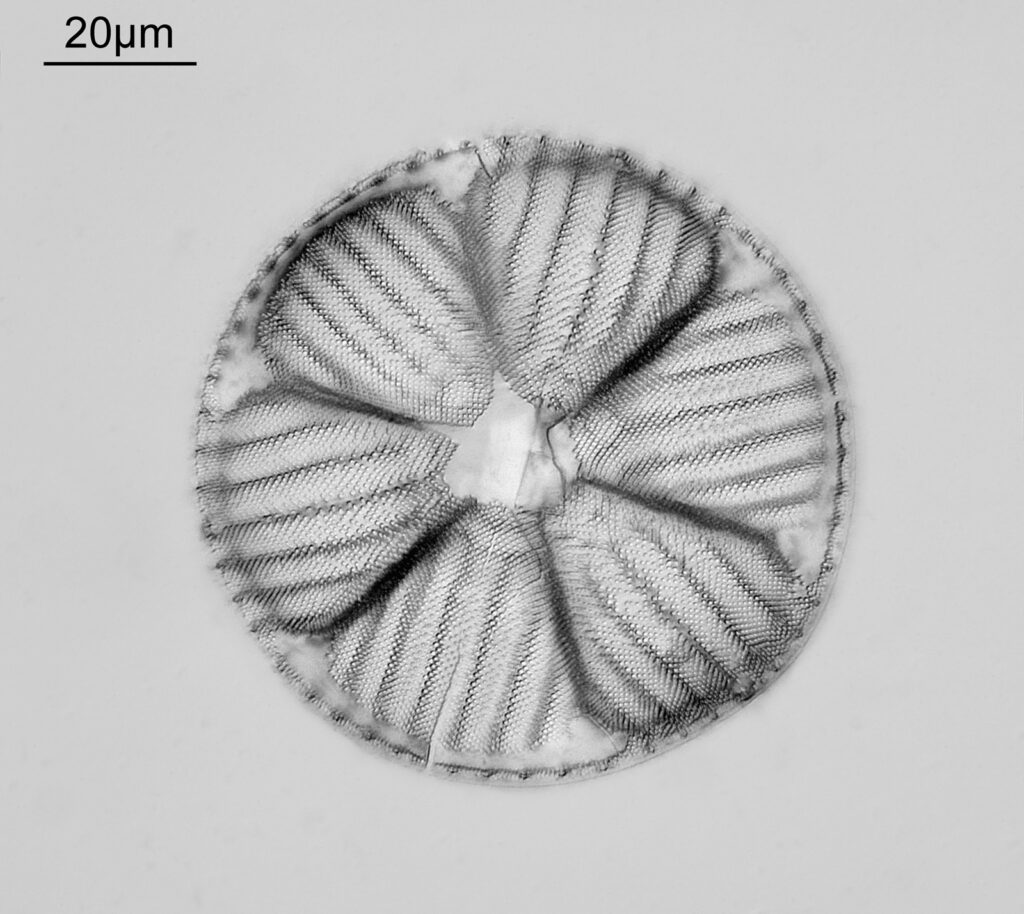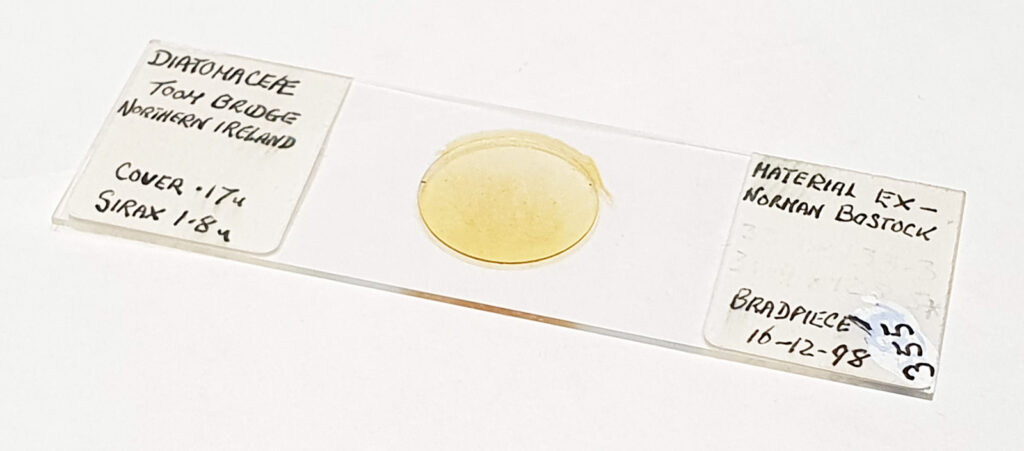Occasionally I like to have a play with some of the unusual historical UV microscope equipment I’ve been fortunate to be able to find, and see whether it can still be used to create images on my Olympus BHB. Last night I got a Bausch and Lomb 53x NA 0.72 reflecting objective out of its box and put it on the microscope. Today’s post shares some images from it and a bit about the objective itself.
To start with here are a couple of images using the objective (resolution reduced for sharing here). Both images were done using 450nm light.
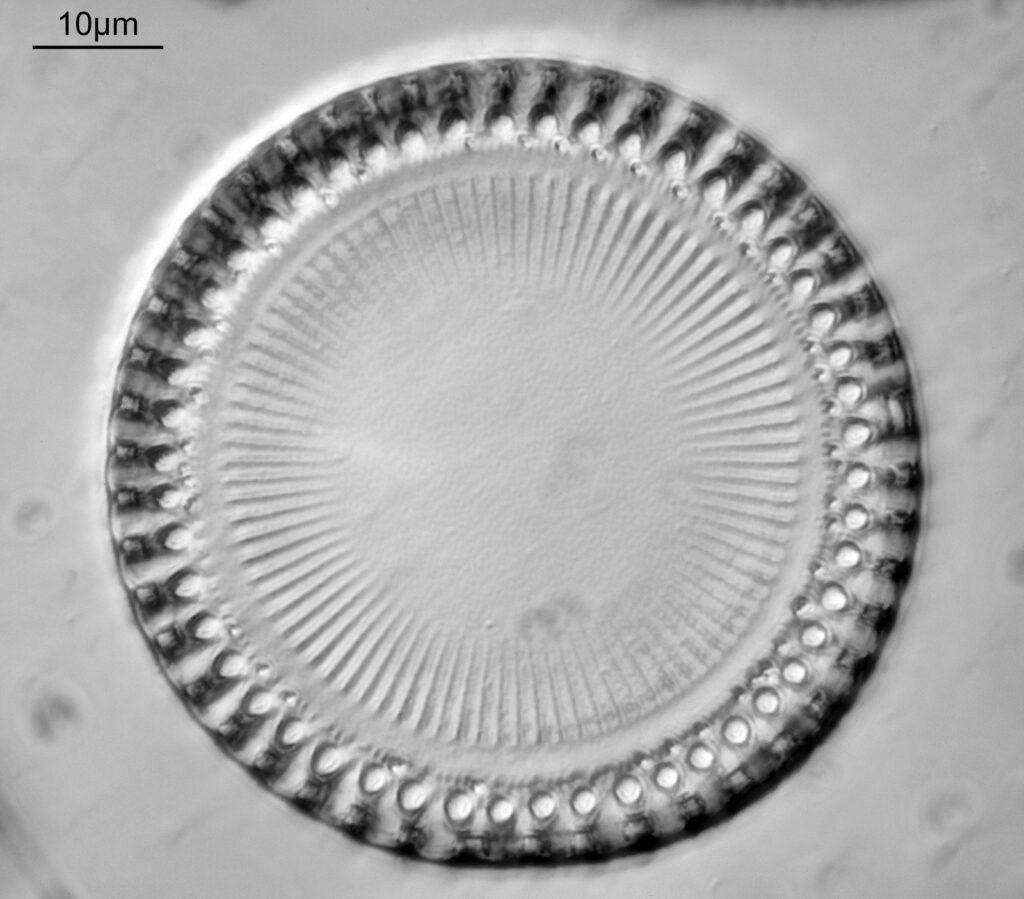

The images were relatively low contrast compared with the objectives I normally use, but this is not unexpected for reflecting objectives. The slide was a 50 form diatom one by Klaus Kemp, shown below.


The Bausch and Lomb (B&L) UV reflecting objectives are unusual and rare. I’ve seen them discussed in a 1958 B&L catalogue, and there were two types – a 53x NA 0.72 and a 94x NA 1.00 – each along with matching reflecting condensers, and 3.5x and 10x UV eyepieces. The reflecting objectives and condensers combined quartz and calcium fluoride refractive elements along with mirrors. The 10x eyepiece was quartz, and the 3.5x quartz and calcium fluoride. I’d assumed these were unicorns and would never see them in the flesh, and then I managed to track down a boxed set of the 53x objective and condenser and 10x eyepiece and jumped on it. Here it is.

Cosmetically they have a little corrosion on the outside of their housings but optically they looked pretty good. Measurement of the UV transmission through them did indeed show there was no normal glass in them, and they transmitted light down to less than 280nm. Interestingly despite the box being B&L, on the back of the objectives it says ‘Polaroid Grey’. My assumption is that they have been made for B&L by Polaroid Grey, but that is an assumption.
I mounted the objective on my microscope using a small RMS extension tube (the working distance is less than a 1mm with this objective, and the extension tube mean that I didn’t need to raise the stage too far). The eyepiece was placed where photoeyepiece normally goes. This is shown below.


This was very much ‘suck it and see’ experiment. I just set it up and tried it out, and was happy to get some images (image stacking was done using Zerene). Depth of field was like razor blade, and initial focusing was fun, especially as working distance was about 0.7mm. There is some dirt in the eyepiece, so I need to take that apart and clean it. The objective can probably have the alignment optimized, but not by me. It was probably either not meant to be done after being set in the factory, or to be sent back to B&L for it to be done. I doubt if there is still anyone around would know how to do it, so that will be left alone. I did not use the matching reflecting condenser, as there is no way to mount that on my Olympus BHB microscope. 450nm light was used as this was more simple than setting up for UV source for the test, but this would be usable down to and below 300nm as it is UV transparent.
There are some fascinating historical optical items out there which would have been horrendously expensive to buy when they were originally made. While rare they do crop up occasionally for sale, and that allows people like me to try out a slice of history for my research. As always, thanks for reading, and if you’d like to know more about my work, I can be reached here.












